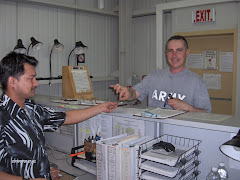GANGTOK
Gangtok, "The Town on a Hilltop" as is aptly called, is the first city of Sikkim. Sprawling down the west side of the ridge flanking the Ranipul River, Gangtok is strategically located at an altitude of 5,500 feet above the sea-level. It has a population of over 50,000 plus a huge floating populace.
Gangtok became the capital city of Sikkim in the mid 19th century. Since then it has become the seat of governance and the hub of all activities be it administrative, political, economic or cultural. The town has rapidly transformed in its strive for a cosmopolitan stance. Today the town has built up an essence for modernity with the hub-bub of urban existence.
However the aura of its old world charm, the heady cultural presence and the warm cordiality of people never fails to mesmerize one. It extends an alluring insight into the inspiring land of tranquility.
With an increased tourist influx in the recent years, the town has surfaced into the mainstream of the tourism industry. It has become the base from which tourists can plan their exploration into Sikkim. Modern amenities in relation to accommodation, cuisine, transport and communication are available. For further assistance, established tour operators can be contacted.
PLACES TO SEE WHEN IN TOWN
Ascending through the winding roads from Ranipul one cannot overlook the enlivening natural setting of this pretty little Himalayan town. The Manipal Central Referral Hospital & Medical College and the Government College situated at the mouth of Gangtok welcome one with a collage of smiles.
Driving uphill, one can visit the Namgyal Institute of Tibetology. This institute is reputed for its collection of invaluable old Tibetan books and manuscripts along with a range of Lepcha and Sanskrit manuscripts and ancient traditional scrolls. It also houses a retail outlet for books, religious artifacts and Tibetan craft items.
At a close proximity is the Do-Drul-Chhorten. The Venerable Trulsi Rimpoche, head of the Nyingmapa order of Tibetan Buddhism, built it in 1945. It is believed that the stupa contains complete sets of Dorjee Phurba (Bajrakilaya), a set of Kan-gyur relics (holy books), complete Zung (mantras) and other religious objects.
Another important seat of the Nyingmapa order is the Enchey Monastery. It was built on the site sanctified by Lama Ruptob Karpo who was known for his powers of flying. This 200 years old Lamasery is one of the oldest monasteries of the East District.
One can take a ride in the cable car from Deorali to the Tashiding Secretariat via Hur Huray Dara while enjoying the scenic splendor as well as the hustle and bustle of the town.
Tshuklakhang, the royal chapel, lies within the palace grounds. It is the principal place of worship and assembly and the repository of a vast collection of Buddhist scriptures and invaluable thangkas. The ceremonial preceding of Kogey Thuetor --- the worship of the snowy range and the Gungsor celebration of the Tibetan New Year are performed here.
One of the favorite spots for walks is the Ridge Road that stretches from the Royal Palace to the White Hall. The Sikkimese style pergola inside the Ridge Park is an ideal place to sit and take in the delicious flavors of nature especially during the cherry blossom season.
In the vicinity is the Flower Show Complex where floricultural exhibitions are organized throughout the year. The prided orchids of Sikkim, seasonal flowers and bansai are placed for display.
Further down, near Zero Point is the Directorate of Handlooms & Handicrafts. Set up to promote local arts and handicrafts, it is the place to catch up with the souvenir hunting. You can also get up close with the craftsmen in the process of weaving, wood carving, doing intricate bamboo work and painting of ethnic Sikkimese designs on carpets, blankets, shawls and mognolia wood tables.
M.G. Marg is in the heart of Gangtok town and is the center of all commercial activities. It is lined with an assortment of shops, eateries, hotels, cyber cafes, entertainment centers, etc. The Tourist Information Center is also situated here.
Lal Bazaar is just a stone's throw away. One can find a tantalizing combination of sights, sounds and smell. It comes alive especially on Sundays which is traditionally the 'Haat' or market days.
On a ridge 7 kilometers away from Gangtok is the Ganesh Tok whence viewers get a bird's eye view of sprawling Gangtok town, especially spectacular in a clear night. Across the hills Mt. Kanchanjunga and Mt. Sinolchu loom over the horizon.
A little distance away is Hanuman Tok, at an altitude of 7,200 feet above the sea level. There is a Hindu temple meticulously maintained by the resident unit of the Indian Army. Devotees from all over come to offer prayers as there is a popular belief that wishes made here are fulfilled.
Encapsulating a verdant expanse of 205 hectares is the Himalayan Zoological Park. This is the natural habitat of the red panda, various species of deer, Himalayan black beer, snow leopard, blue sheep and other endangered animals of the Eastern Himalayas. The animals are maintained using "Immersion Exhibit Technique" for the first time in India.
-----*-----









































No comments:
Post a Comment